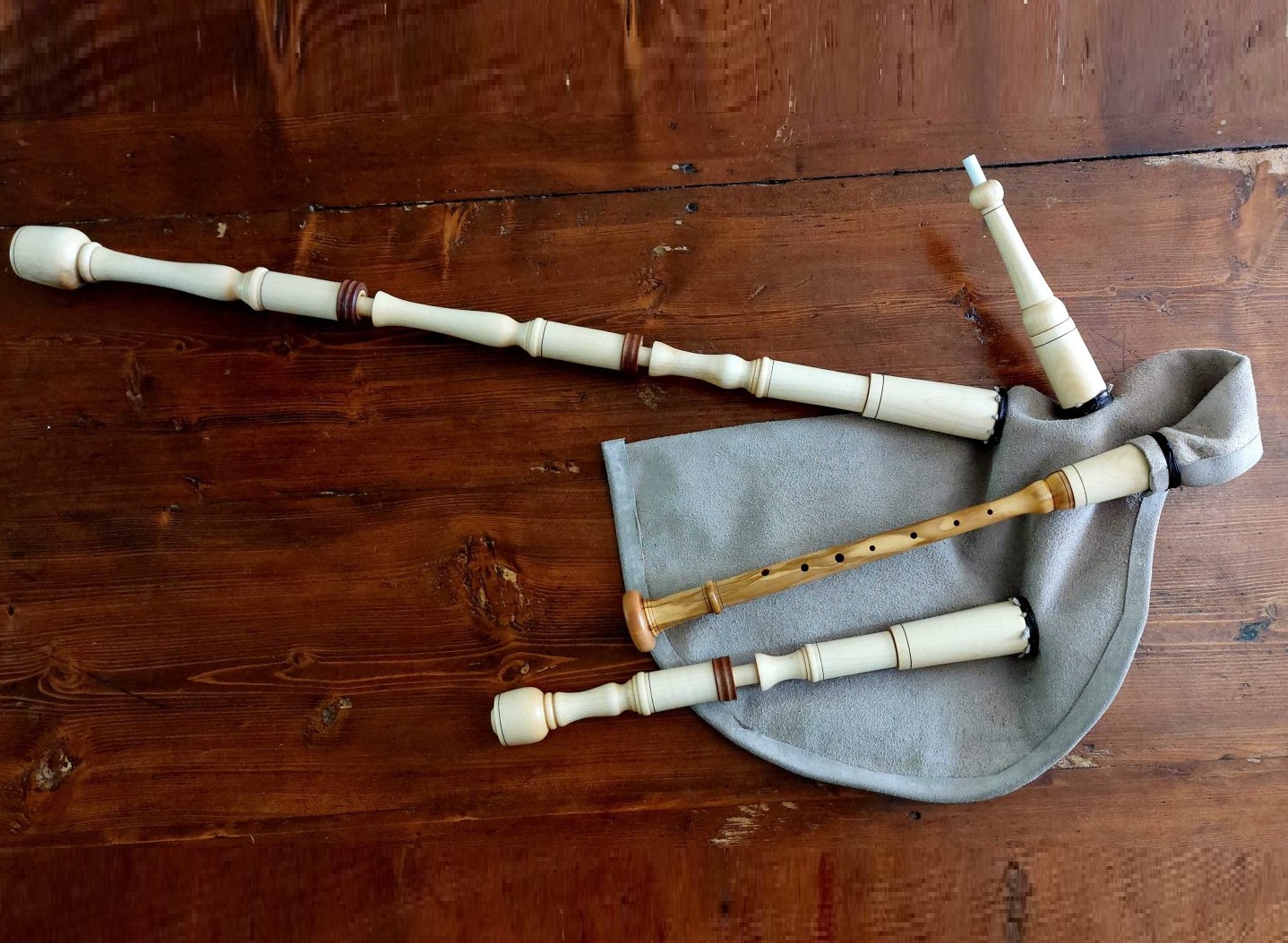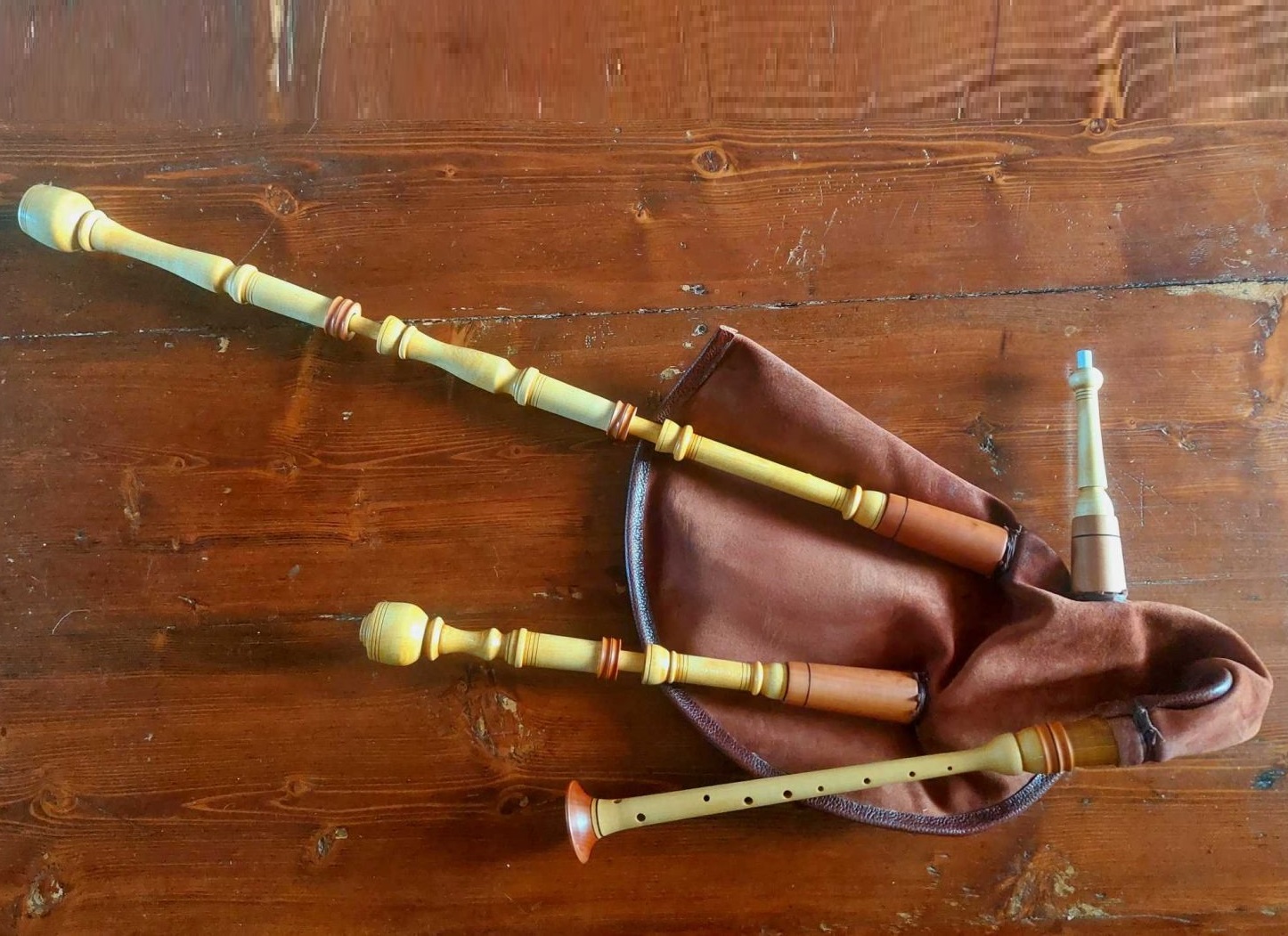Piva
Woodwinds
Europe
Between 1001 and 1900 AD
Video
The piva is a traditional bagpipe indigenous to northern Italy and the Italian-speaking canton of Ticino in Switzerland. Characterized by its single chanter and single drone, the piva produces a distinctive, melodious sound that has been integral to the folk music traditions of these regions. The instrument’s design is relatively straightforward, yet it delivers a rich tonal quality that has captivated listeners for centuries.
Classified as an aerophone, the piva belongs to the bagpipe family of musical instruments. Aerophones produce sound primarily through the vibration of air without the use of strings or membranes. In the case of the piva, the musician inflates a bag, which then supplies a steady stream of air to the chanter and drone, facilitating continuous sound production.
History of Piva
The piva’s origins trace back to medieval Europe, with its prominence emerging between the 14th and 16th centuries. While the exact timeline of its inception remains uncertain, illustrations and scriptural evidence suggest that similar instruments were used in regions like Veneto. The piva was traditionally played in ensembles alongside the piffero, a folk oboe, until the accordion replaced it in the 1950s. In Switzerland, the piva had fallen out of favor by the 19th century but experienced a revival in 1980, thanks to the efforts of Swiss-German folk musician Urs Klauser.
Construction Materials
The piva is typically crafted from readily available natural materials. The bag, serving as the air reservoir, is traditionally made from animal hides or bladders, such as goat or sheep skin, due to their durability and airtight properties. The chanter and drone are usually constructed from hardwoods like boxwood or fruitwood, selected for their density and ability to produce a clear, resonant tone. Reeds, essential for sound production, are fashioned from cane or similar plant materials, meticulously crafted to achieve the desired pitch and timbre.
Types of Piva
While the piva maintains a relatively consistent design, variations exist based on regional preferences and historical developments. In the Istria region of Croatia, a different instrument bearing the same name is known, though details about its construction and use are less documented. Additionally, the term “piva” in some contexts refers to a type of dance or musical form, which can lead to confusion. However, within the realm of bagpipes, the piva is distinct in its single chanter and single drone configuration.
Characteristics
The piva’s most defining characteristic is its single chanter and single drone setup, which distinguishes it from other bagpipes that may feature multiple drones. This configuration allows for a harmonious blend of melody and drone accompaniment, creating a rich, continuous sound. The instrument’s relatively small size makes it portable and suitable for both indoor and outdoor performances. Its tonal quality is warm and reedy, with a melodic range determined by the chanter’s design and the player’s technique.
Sound Production
Sound is produced on the piva by the musician blowing air into the bag through a blowpipe. The bag acts as a reservoir, maintaining a constant air pressure that enables continuous sound. The player presses the bag under their arm to regulate this pressure, directing air into the chanter and drone. The chanter, equipped with finger holes, allows the musician to play melodies, while the drone produces a constant pitch, providing harmonic support. The reeds within the chanter and drone vibrate as air passes through them, generating sound.
Playing Methods
To play the piva, the musician first inflates the bag via the blowpipe. Once adequately filled, the player uses their arm to apply pressure to the bag, controlling the airflow to the chanter and drone. By covering and uncovering the finger holes on the chanter, different notes are produced, allowing for the performance of melodies. The continuous airflow ensures an unbroken sound, a hallmark of bagpipe music. Mastery of the piva requires skill in maintaining steady air pressure, precise finger movements, and an understanding of the instrument’s tuning and tonal capabilities.
Roles in Music
Historically, the piva played a significant role in folk music traditions of northern Italy and parts of Switzerland. It was commonly used to accompany dances and festive occasions, providing rhythmic and melodic support. In ensemble settings, the piva often partnered with the piffero, creating a dynamic interplay between the sustained tones of the bagpipe and the piercing melodies of the oboe-like instrument. This combination was particularly popular until the mid-20th century when the accordion began to supplant traditional instruments in folk ensembles.
Cultural Significance
The piva holds a cherished place in the cultural heritage of the regions where it was traditionally played. Its music is intertwined with local customs, dances, and celebrations, reflecting the communal spirit and historical narratives of these communities. The instrument’s resurgence in the late 20th century, particularly in Switzerland, underscores a renewed interest in preserving and revitalizing traditional musical practices. Today, the piva symbolizes a connection to the past, serving as a tangible link to the rich tapestry of European folk music traditions.
It is a distinctive and historically significant bagpipe that has contributed richly to the musical traditions of northern Italy and Switzerland. Its unique characteristics and evocative sound continue to resonate with musicians and audiences, ensuring its place in the annals of traditional European music.
FAQ
What is the history of the Piva musical instrument?
The Piva is a traditional Italian bagpipe from the northern regions, especially Lombardy and Emilia-Romagna. It dates back to the medieval period and was commonly played by shepherds and rural musicians. The instrument gradually declined in use but has seen a revival in folk music performances. Historical records link it to festive occasions and pastoral traditions.
How is the Piva used in music?
The Piva is primarily used in folk music, especially in Italian and Alpine traditions. It produces a continuous drone with a melodic pipe, making it ideal for dance tunes and festive gatherings. Traditionally, it was played solo or with percussion, but modern musicians incorporate it into ensembles. Today, it remains popular in cultural and historical reenactments.
What are the main features of the Piva?
The Piva consists of a leather or synthetic bag, a blowpipe for air intake, a drone pipe for a continuous sound, and a chanter for playing melodies. It has a bright, reedy tone similar to other bagpipes but with a distinctively Italian character. The instrument is relatively small compared to other bagpipes, making it more portable. Skilled players use controlled breathing techniques to maintain consistent airflow.
 Links
Links
References
Other Instrument
Categories



















